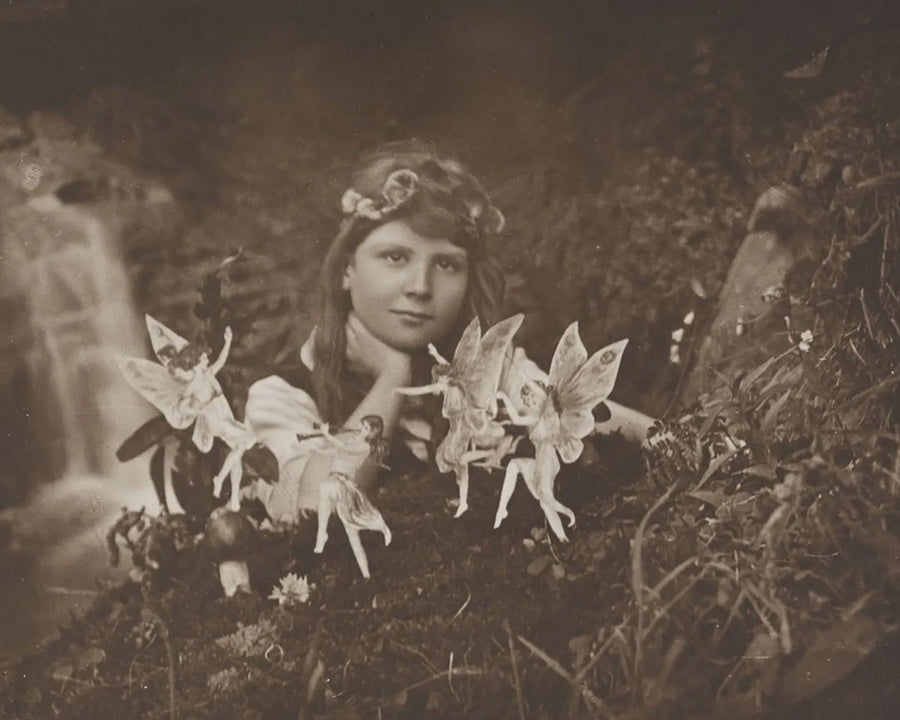
Long before AI could easily make fantasy come to life, two young girls, Elsie Wright and her cousin Frances Griffiths, pulled off one of the most famous photographic hoaxes of all time - the Cottingley Fairies.
In 1917, nine-year-old Frances, newly arrived in the UK from South Africa, was staying with her cousin, 16-year-old Elsie, in Cottingley, West Yorkshire. The two girls loved playing by the stream at the bottom of the garden, though Elsie's mother was less thrilled with the muddy feet and soaked clothes they brought home! To justify their muddy adventures, Frances and Elsie claimed they were visiting fairies. When the adults didn't believe them, they decided to prove it. They borrowed Elsie's father's camera and returned with photos showing fairies dancing alongside them. At the time, photography was still seen as a magical medium, and people believed that if something was captured on film, it had to be real.
The photos first gained public attention in 1919, when Elsie’s mother showed them at a Theosophical Society meeting. The "photographic evidence of fairies" sparked huge interest, and soon the pictures were displayed at the society’s conference in Harrogate, where they were spotted by Edward Gardner. Gardner sent the photos to Harold Snelling, a photography expert, who declared them genuine and untouched by studio work - though he didn’t claim they depicted real fairies.

The hoax also caught the attention of none other than Sir Arthur Conan Doyle, the famous author behind Sherlock Holmes. Conan Doyle, who had an interest in spiritualism, believed the photos were genuine proof of fairy life. He even used the photos to illustrate an article he was commissioned to write about fairies for the 1920 Christmas edition of The Strand Magazine. Conan Doyle’s reputation lent credibility to the photos, helping to keep the hoax alive. And why wouldn’t people want to believe? In a time when the world was recovering from the horrors of World War I, the idea that fairies existed offered a sense of hope, wonder, and magic.
Eager for confirmation that fairies were in fact real, Gardner and Conan Doyle also had the photographs analysed by Kodak technicians. While they couldn’t find evidence of tampering, and declared that the photos depicted what was in front of the camera lens, Kodak stopped short of certifying that the images were proof of fairies.
It wasn’t until 1983 that Frances and Elsie finally confessed that the fairies were fake in an article for The Unexplained. In the article Elsie admitted to copying the illustrations of dancing girls from a popular children's book Princess Mary’s Gift Book (1914) onto cardboard, adding wings and turning them into cutouts. The girls used hatpins to prop up their fairy figures, took their famous photos and tossed the evidence into the stream. In a 1985 interview, Elsie explained that they felt too embarrassed to admit the hoax after fooling Sir Arthur Conan Doyle, saying, "Two village kids and a brilliant man like Conan Doyle - well, we could only keep quiet."
Today, we’re far more skeptical of photographs, thanks to AI and advanced editing software. But in the early 20th century, photography was viewed with awe, and the world felt full of limitless possibilities. The Cottingley Fairies hoax is a fascinating part of our history, from a time when creativity, art, a camera, and a lot of imagination were so powerful they could convince the world that magic was real!

